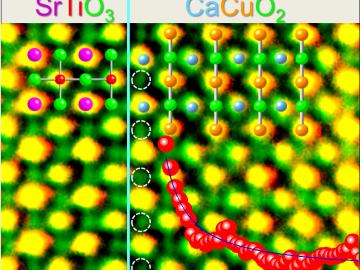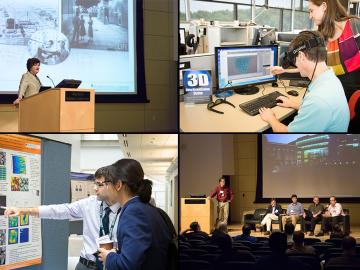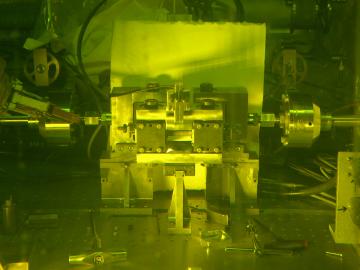Filter News
Area of Research
- (-) Biology and Soft Matter (1)
- (-) Fusion Energy (1)
- (-) Materials (9)
- Chemical and Engineering Materials (1)
- Chemistry and Physics at Interfaces (3)
- Clean Energy (4)
- Computational Chemistry (1)
- Energy Frontier Research Centers (3)
- Functional Materials for Energy (3)
- Geographic Information Science and Technology (1)
- Materials Synthesis from Atoms to Systems (3)
- Materials Under Extremes (3)
- Neutron Science (5)
- Nuclear Science and Technology (1)
- Quantum Condensed Matter (1)
- Supercomputing (5)
News Type
News Topics
Media Contacts

The Department of Energy’s Oak Ridge National Laboratory, FCA US LLC, and the foundry giant, Nemak of Mexico, are combining their strengths to create lightweight powertrain materials that will help the auto industry speed past the technological

Quasiparticles—excitations that behave collectively like particles—are central to energy applications but can be difficult to detect. Recently, however, researchers have seen evidence of quasiparticles called negative trions forming and fading in a layer of semiconducting mate...



When it’s up and running, the ITER fusion reactor will be very big and very hot, with more than 800 cubic meters of hydrogen plasma reaching 170 million degrees centigrade. The systems that fuel and control it, on the other hand, will be small and very cold. Pellets of frozen gas will be shot int...

In the Stone, Bronze and Iron Ages, the state of the art of materials science defined technology’s zenith and accelerated economies. Now, in the Information Age, data is beginning to drive the development of advanced materials, from photovoltaics for solar energy and superconductors for efficient el...


From the bluebird painting propped against her office wall and the deer she mentions seeing outside her office window, Linda Lewis might be mistaken for a wildlife biologist at first glance. But rather than trailing animal tracks, Lewis, a researcher at the Department of Energy’s Oak Ridge National Laboratory, is more interested in marks left behind by humans.

With more than 30 patents, James Klett is no stranger to success, but perhaps the Oak Ridge National Laboratory researcher’s most noteworthy achievement didn’t start out so hot – or so it seemed at the time.

Andrew Stack, a geochemist at the Department of Energy’s Oak Ridge National Laboratory, advances understanding of the dynamics of minerals underground.




